Calcium Lactate USP IP BP Ph Eur FCC Food Grade, Sodium Lactate USP BP Ph Eur FCC Food Grade & Lactic acid Sodium Lactate USP BP Ph Eur FCC Food Grade Suppliers Exporters, Manufacturers
Calcium Lactate
CAS Number: 814-80-2 Sodium Lactate USP IP BP Ph Eur FCC Food Grade Suppliers Exporters, Manufacturers
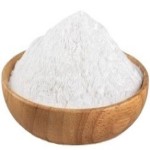
Please visit Safety Data Sheet of Calcium Lactate USP IP BP Ph Eur FCC Food Grade Manufacturers.
Calcium lactate USP Grade Specifications
C6H10CaO6-xH2O (anhydrous) --- 218.22
Propanoic acid, 2-hydroxy-, calcium salt (2:1), hydrate.
Calcium lactate (1:2) hydrate [CAS 41372-22-9].
Calcium lactate (1:2) pentahydrate. 308.30 [CAS 5743-47-5].
Anhydrous [CAS 814-80-2].
Calcium Lactate contains not less than 98.0 percent and not more than 101.0 percent of C6H10CaO6, calculated on the dried basis.
Identification:
A: A solution (1 in 20) responds to the tests for Calcium.
B: Infrared Absorption 197K . USP30
Acidity: Titrate 20 mL of a solution (1 in 20) with 0.10 N sodium hydroxide, using PhPh TS as the indicator: not more than 0.50 mL is required for neutralization (0.45% as lactic acid).
Loss on drying: Distribute a 1- to 2-g portion evenly in a suitable weighing dish to a depth of not more than 3 mm, and dry at 120 for 4 hours: the pentahydrate loses between 22.0% and 27.0% of its weight; the trihydrate loses between 15.0% and 20.0% of its weight; the monohydrate loses between 5.0% and 8.0% of its weight; and the dried form loses not more than 3.0% of its weight.
Volatile fatty acid: Stir about 500 mg with 1 mL of sulfuric acid, and warm: the mixture does not emit an odor of volatile fatty acid.
Heavy metals: the limit is 0.002%.
Limit of magnesium and alkali salts: Mix 1.0 g with 40 mL of water, carefully add 1 mL of hydrochloric acid, and heat the solution to boiling. Proceed as directed in the test for Magnesium and alkali salts under Calcium Carbonate, beginning with “Rapidly add 40 mL of oxalic acid TS”: the weight of the residue does not exceed 5.0 mg (1.0%).
Calcium Lactate Monohydrate BP Ph Eur Grade Specifications
C6H10CaO6,H2O --- 236.0 --- CAS 41372-22-9
DEFINITION
Calcium bis(2-hydroxypropanoate) or mixture of calcium (2R)-, (2S)- and (2RS)-2-hydroxypropanoates monohydrates.
Content: 98.0 per cent to 102.0 per cent (dried substance).
CHARACTERS
Appearance: White or almost white, crystalline or granular powder.
Solubility: Soluble in water, freely soluble in boiling water, very slightly soluble in ethanol (96 per cent).
IDENTIFICATION
A. It complies with the test for loss on drying (see Tests).
B. It gives the reaction of lactates.
C. It gives reaction of calcium.
TESTS
Solution S: Dissolve 5.4 g (equivalent to 5.0 g of the dried substance) with heating in carbon dioxide-free water prepared from distilled water, allow to cool and dilute to 100 ml with the same solvent.
Appearance of solution: Solution S is not more opalescent than reference suspension and not more intensely coloured than reference solution.
Acidity or alkalinity: To 10 ml of solution S add 0.1 ml of PhPh solution R and 0.5 ml of 0.01 M hydrochloric acid . The solution is colourless. Not more than 2.0 ml of 0.01 M sodium hydroxide is required to change the colour of the indicator to pink.
Chlorides: Maximum 200 ppm.
Sulphates: Maximum 400 ppm.
Barium: To 10 ml of solution S add 1 ml of calcium sulphate solution. Allow to stand for 15 min. Any opalescence in the solution is not more intense than that in a mixture of 1 ml of distilled water R and 10 ml of solution S.
Iron: Maximum 50 ppm.
Magnesium and alkali salts: Maximum 1 per cent.
Heavy metals: 10 ppm maximum.
Loss on drying: 5.0 per cent to 8.0 per cent, determined on 0.500 g by drying in an oven at 125C.
Calcium Lactate Trihydrate BP Ph Eur Grade Specifications
C6H10CaO6,3H2O --- 218.2 --- CAS 814-80-2 (anhydrous)
DEFINITION
Calcium bis(2-hydroxypropanoate) or mixture of calcium (2R)-, (2S)- and (2RS)-2-hydroxypropanoates trihydrates.
Content: 98.0 per cent to 102.0 per cent (dried substance).
CHARACTERS
Appearance: White or almost white, crystalline or granular powder.
Solubility: Soluble in water, freely soluble in boiling water, very slightly soluble in ethanol (96 per cent).
IDENTIFICATION
A. It complies with the test for loss on drying (see Tests).
B. It gives the reaction of lactates.
C. It gives reaction of calcium.
TESTS
Solution S: Dissolve 6.2 g (equivalent to 5.0 g of the dried substance) with heating in carbon dioxide-free water prepared from distilled water, allow to cool and dilute to 100 ml with the same solvent.
Appearance of solution: Solution S is not more opalescent than reference suspension and not more intensely coloured than reference solution.
Acidity or alkalinity: To 10 ml of solution S add 0.1 ml of PhPh solution and 0.5 ml of 0.01 M hydrochloric acid . The solution is colourless. Not more than 2.0 ml of 0.01 M sodium hydroxide is required to change the colour of the indicator to pink.
Chlorides: Maximum 200 ppm.
Sulphates: Maximum 400 ppm.
Barium: To 10 ml of solution S add 1 ml of calcium sulphate solution. Allow to stand for 15 min. Any opalescence in the solution is not more intense than that in a mixture of 1 ml of distilled water and 10 ml of solution S.
Iron: Maximum 50 ppm.
Magnesium and alkali salts: Maximum 1 per cent.
Heavy metals: Maximum 10 ppm.
Loss on drying: 15.0 per cent to 20.0 per cent, determined on 0.500 g by drying in an oven at 125C.
Specifications of Calcium Lactate Pentahydrate BP Ph Eur Grade
C6H10CaO6,5H2O --- 218.2 --- CAS 814-80-2 (anhydrous)
DEFINITION
Calcium bis(2-hydroxypropanoate) or mixture of calcium (2R)-, (2S)- and (2RS)-2-hydroxypropanoates pentahydrates.
Content: 98.0 per cent to 102.0 per cent (dried substance).
CHARACTERS
Appearance: White or almost white, crystalline or granular powder, slightly efflorescent.
Solubility: Soluble in water, freely soluble in boiling water, very slightly soluble in ethanol (96 per cent).
IDENTIFICATION
A. It complies with the test for loss on drying (see Tests).
B. It gives the reaction of lactates.
C. It gives reaction of calcium.
TESTS
Solution S: Dissolve 7.1 g (equivalent to 5.0 g of the dried substance) with heating in carbon dioxide-free water R prepared from distilled water, allow to cool and dilute to 100 ml with the same solvent.
Appearance of solution: Solution S is not more opalescent than reference suspension and not more intensely coloured than reference solution.
Acidity or alkalinity: To 10 ml of solution S add 0.1 ml of PhPh solution and 0.5 ml of 0.01 M hydrochloric acid . The solution is colourless. Not more than 2.0 ml of 0.01 M sodium hydroxide is required to change the colour of the indicator to pink.
Chlorides: Maximum 200 ppm.
Sulphates: Maximum 400 ppm.
Barium: To 10 ml of solution S add 1 ml of calcium sulphate solution. Allow to stand for 15 min. Any opalescence in the solution is not more intense than that in a mixture of 1 ml of distilled water and 10 ml of solution S.
Iron: Maximum 50 ppm.
Magnesium and alkali salts: Maximum 1 per cent.
Heavy metals: Maximum 10 ppm.
Loss on drying: 22.0 per cent to 27.0 per cent, determined on 0.500 g by drying in an oven at 125C.
Specifications of Calcium lactate IP Grade
We also offer Calcium Lactate IP.
Specifications of Calcium Lactate FCC Food Grade
2-Hydroxypropanoic Acid Calcium Salt
[CH3CH(OH)COO]2Ca-xH2O
C6H10CaO6-xH2O Formula wt, anhydrous --- 218.22
INS: 327 CAS: 814-80-2
DESCRIPTION
Calcium Lactate occurs as a white to cream-colored, crystalline powder or granules. It contains up to five molecules of water of crystallization. The pentahydrate is somewhat efflorescent and at 120C becomes anhydrous. It is soluble in water and practically insoluble in alcohol.
REQUIREMENTS
Identification: A 1:20 aqueous solution gives positive tests for Calcium and for Lactate.
Assay: Not less than 98.0% and not more than 101.0% of C6H10CaO6, calculated on the dried basis.
Acidity: Passes test (about 0.45%, as lactic acid).
Fluoride: Not more than 0.0015%.
Lead: Not more than 2 mg/kg.
Loss on Drying: Pentahydrate: Between 22.0% and 27.0%; Trihydrate: Between 15.0% and 20.0%; Monohydrate: Between 5.0% and 8.0%; Dried Form: Not more than 3.0%.
Magnesium and Alkali Salts: Not more than 1%.
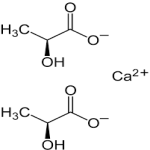
Please visit Hazard Statement of Calcium Lactate USP IP BP Ph Eur FCC Food Grade Suppliers.
Sodium Lactate
CAS Number: -- Sodium Lactate USP BP Ph Eur FCC Food Grade Suppliers Exporters, Manufacturers
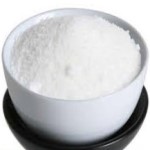
Please visit Safety Data Sheet of Sodium Lactate USP BP Ph Eur FCC Food Grade Manufacturers.
Sodium Lactate Solution USP Grade Specifications
Sodium Lactate Solution is an aqueous solution containing not less than 50.0 percent, by weight, of monosodium lactate. It contains not less than 98.0 percent and not more than 102.0 percent of the labeled amount of C3H5NaO3.
Label it to indicate its content of sodium lactate.
Identification: It responds to the tests for Sodium and for Lactate.
pH: between 5.0 and 9.0.
Chloride: A portion, equivalent to 1 g of sodium lactate, shows no more chloride than corresponds to 0.7 mL of 0.020 N hydrochloric acid (0.05%).
Sulfate: To 10 mL of a solution (1 in 100) add 2 drops of hydrochloric acid and 1 mL of barium chloride TS: no turbidity is produced.
Heavy metals: Dilute a quantity of Solution, equivalent to 2.0 g of sodium lactate, with 1 N acetic acid to 25 mL: the limit is 0.001%.
Sugars: To 10 mL of hot alkaline cupric tartrate TS add 5 drops of Solution: no red precipitate is formed.
Limit of citrate, oxalate, phosphate, or tartrate: Dilute 5 mL with recently boiled and cooled water to 50 mL. To 4 mL of this solution add 6 N ammonium hydroxide or 3 N hydrochloric acid, if necessary, to bring the pH to between 7.3 and 7.7. Add 1 mL of calcium chloride TS, and heat in a boiling water bath for 5 minutes: the solution remains clear.
Limit of methanol and methyl esters:
Potassium permanganate and phosphoric acid solution: Dissolve 3 g of potassium permanganate in a mixture of 15 mL of phosphoric acid and 70 mL of water. Dilute with water to 100 mL.
Oxalic acid and sulfuric acid solution: Cautiously add 50 mL of sulfuric acid to 50 mL of water, mix, cool, add 5 g of oxalic acid, and mix to dissolve.
Standard preparation: Prepare a solution containing 10.0 mg of methanol in 100 mL of dilute alcohol (1 in 10).
Test preparation: Place 40.0 g in a glass-stoppered, round-bottom flask, add 10 mL of water, and add cautiously 30 mL of 5 N potassium hydroxide. Connect a condenser to the flask, and steam-distill, collecting the distillate in a suitable 100-mL graduated vessel containing 10 mL of alcohol. Continue the distillation until the volume in the receiver reaches approximately 95 mL, and dilute the distillate with water to 100.0 mL.
Procedure: Transfer 10.0 mL each of the Standard preparation and the Test preparation to 25-mL volumetric flasks, to each add 5.0 mL of Potassium permanganate and phosphoric acid solution, and mix. After 15 minutes, to each add 2.0 mL of Oxalic acid and sulfuric acid solution, stir with a glass rod until the solution is colorless, add 5.0 mL of fuchsin-sulfurous acid and dilute with water to volume. After 2 hours, concomitantly determine the absorbances of both solutions in 1-cm cells at the wavelength of maximum absorbance at about 575 nm, with a suitable spectrophotometer, using water as the blank: the absorbance of the solution from the Test preparation is not greater than that from the Standard preparation (0.025%).
Sodium Lactate BP Ph Eur Grade Specifications
DEFINITION
Solution of a mixture of the enantiomers of sodium 2-hydroxypropanoate in approximately equal proportions.
Content
Minimum 50.0 per cent m/m of sodium 2-hydroxypropanoate (C3H5NaO3); 96.0 per cent to 104.0 per cent of the content of sodium lactate stated on the label.
CHARACTERS
Appearance: Clear, colourless, slightly syrupy liquid.
Solubility: Miscible with water and with alcohol.
IDENTIFICATION
A. To 0.1 ml add 10 ml of water. 5 ml of the solution gives the reaction of lactates.
B. It gives reaction of sodium.
TESTS
Solution S: Dilute a quantity of the substance to be examined corresponding to 40.0 g of sodium lactate to 200 ml with distilled water.
Appearance of solution: The substance to be examined is clear and not more intensely coloured than reference solution.
pH: 6.5 to 9.0 for the substance to be examined.
Reducing sugars and sucrose: To 5 ml of the substance to be examined add 2 ml of dilute sodium hydroxide solution and 0.2 ml of copper sulphate solution. The solution is clear and blue and remains so on boiling. Add to the hot solution 4 ml of hydrochloric acid. Boil for 1 min. Add 6 ml of strong sodium hydroxide solution and heat to boiling again. The solution is clear and blue.
Methanol: the limit is 50 ppm calculated with reference to sodium lactate, if intended for use in the manufacture of parenteral dosage forms, dialysis, haemodialysis or haemofiltration solutions.
Chlorides: Maximum 50 ppm calculated with reference to sodium lactate.
Oxalates and phosphates: To pass the test.
Sulphates: Maximum 100 ppm calculated with reference to sodium lactate.
Aluminium: Maximum 0.1 ppm, if intended for use in the manufacture of parenteral dosage forms, dialysis, haemodialysis or haemofiltration solutions.
Atomic absorption spectrometry: To pass the test.
Barium: To 10 ml of solution S add 10 ml of calcium sulphate solution. Allow to stand for 30 min. Any opalescence in the solution is not more intense than that of a standard prepared at the same time and in the same manner using a mixture of 10 ml of solution S and 10 ml of distilled water R.
Iron: Maximum 10 ppm calculated with reference to sodium lactate.
Heavy metals: Maximum 10 ppm calculated with reference to sodium lactate.
Bacterial endotoxins: Less than 5 IU/g, if intended for use in the manufacture of parenteral dosage forms without a further appropriate procedure for the removal of bacterial endotoxins.
Sodium Lactate Solution FCC Food Grade Specifications
2-Hydroxypropanoic Acid, Monosodium Salt
C3H5NaO3 Formula weight, anhydrous 112.06
CAS: [72-17-3]
DESCRIPTION
Sodium Lactate Solution occurs as a clear, colorless or practically colorless, slightly viscous liquid that is odorless or has a slight, not unpleasant odor. It is miscible with water. It is normally available in solutions with concentrations ranging from 60% to about 80%, by weight.
Function: Emulsifier; flavor enhancer; flavoring agent or adjuvant; humectant; pH control agent.
REQUIREMENTS
Indicate the content, by weight, of sodium lactate (C3H5NaO3).
Identification: A sample gives positive tests for Sodium and for Lactate.
Assay: Not less than 50.0%, by weight, and not less than 98.0% and not more than 102.0%, by weight, of the labeled amount of C3H5NaO3.
Chloride: Not more than 0.05%.
Citrate, Oxalate, Phosphate, or Tartrate: Passes test.
Cyanide: Not more than 0.5 mg/kg.
Lead: Not more than 2 mg/kg.
Methanol and Methyl Esters: Not more than 0.025%.
pH: Between 5.0 and 9.0.
Sugars: Passes test.
Sulfate: Not more than 0.005%.
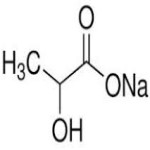
Please visit Hazard Statement of Sodium Lactate USP BP Ph Eur FCC Food Grade Suppliers.
Lactic acid
CAS Number: -- Sodium Lactate USP BP Ph Eur FCC Food Grade Suppliers Exporters, Manufacturers
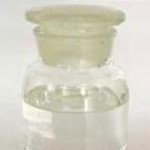
Please visit Safety Data Sheet of Lactic acid USP BP Ph Eur FCC Food Grade Manufacturers.
Lactic Acid USP Grade Specifications:
Propanoic acid, 2-hydroxy-;
Lactic acid --- CAS 50-21-5
DEFINITION
Lactic Acid is a mixture of lactic acid (C3H6O3 ) and lactic acid lactate (C6H10O5), equivalent to a total of NLT 88.0% and NMT 92.0%, by weight, of lactic acid (C3H6O3). It is obtained by the lactic fermentation of sugars or is prepared synthetically. Lactic Acid obtained by fermentation of sugars is levorotatory, whereas that prepared synthetically is racemic.
[Note: Lactic Acid prepared by fermentation becomes dextrorotatory on dilution, which hydrolyzes l-(−)-lactic acid lactate to l-(+)-lactic acid.]
IDENTIFICATION
A. Identification Tests: General, Lactate Meets the requirements.
ASSAY
Procedure
Sample: 2.5 mL, accurately weighed
Titrimetric system
Mode: Residual titration
Titrant: 1 N sodium hydroxide
Back-titrant: 1 N sulfuric acid
Endpoint detection: Visual
Analysis: Transfer the Sample to a tared 250-mL flask, add 50.0 mL of Titrant, and boil the mixture for 20 min. Add phenolphthalein and titrate the excess alkali in the hot solution with Back-titrant. Perform a blank determination. Each mL of Titrant is equivalent to 90.08 mg of lactic acid (C3H6O3).
Acceptance criteria: 88.0% to 92.0% (w/w)
Sample solution: 1 in 100
Analysis: To 10 mL of the Sample solution acidified with nitric acid add a few drops of silver nitrate.
Acceptance criteria: No opalescence is produced immediately.
Sulfate:
Sample solution: 1 in 100
Analysis: To 10 mL of the Sample solution add 2 drops of hydrochloric acid and 1 mL of barium chloride.
Acceptance criteria: No turbidity is produced.
Residue on Ignition:
Sample: 5 mL, accurately weighed
Acceptance criteria: NMT 3 mg (0.05%)
Limit of Citric, Oxalic, Phosphoric, or Tartaric Acid:
Sample solution: 1 in 10
Analysis: To 10 mL of the Sample solution add 40 mL of calcium hydroxide TS, and boil for 2 min.
Acceptance criteria: No turbidity is produced.
Readily Carbonizable Substances:
Sample: 5 mL
Analysis: Rinse a test tube with sulfuric acid, and allow to drain for 10 min. Add 5 mL of sulfuric acid to the test tube, carefully overlay it with the Sample, and maintain the tube at 15°.
Acceptance criteria: No dark color develops at the interface of the two acids within 15 min.
Optical Rotation, Angular Rotation: −0.05° to +0.05° for racemic Lactic Acid.
Sugars:
Sample: 5 drops
Analysis: To 10 mL of hot alkaline cupric tartrate add the Sample.
Acceptance criteria: No red precipitate is formed.
Packaging and Storage: Preserve in tight containers.
Lactic Acid BP Ph Eur Grade Specifications
C3H6O3 -- 90.1 -- CAS 50-21-5
DEFINITION
Mixture of 2-hydroxypropanoic acid, its condensation products, such as lactoyl-lactic acid and polylactic acids, and water. The equilibrium between lactic acid and polylactic acids depends on the concentration and temperature. It is usually the racemate ((RS)-lactic acid).
Content: 88.0 per cent m/m to 92.0 per cent m/m of C3H6O3.
CHARACTERS
Appearance: Colourless or slightly yellow, syrupy liquid.
Solubility: Miscible with water and with ethanol (96 per cent).
IDENTIFICATION
A. Dissolve 1 g in 10 ml of water. The solution is strongly acidic.
B. Relative density: 1.20 to 1.21.
C. It gives the reaction of lactates.
Solution S: Dissolve 5.0 g in 42 ml of 1 M sodium hydroxide and dilute to 50 ml with distilled water.
Appearance: The substance to be examined is not more intensely coloured than reference solution.
Ether-insoluble substances: Dissolve 1.0 g in 25 ml of ether. The solution is not more opalescent than the solvent used for the test.
Sugars and other reducing substances: To 1 ml of solution S add 1 ml of 1 M hydrochloric acid , heat to boiling, allow to cool and add 1.5 ml of 1 M sodium hydroxide and 2 ml of cupri-tartaric solution. Heat to boiling. No red or greenish precipitate is formed.
Methanol: Maximum 50 ppm, if intended for use in the manufacture of parenteral dosage forms.
Citric, oxalic and phosphoric acids: To pass the test.
Sulphates: Maximum 200 ppm.
Calcium: Maximum 200 ppm.
Heavy metals: Maximum 10 ppm.
Bacterial endotoxins: Less than 5 IU/g, if intended for use in the manufacture of parenteral dosage forms without a further appropriate procedure for the removal of bacterial endotoxins. Before use, neutralise the test solution to pH 7.0-7.5 with strong sodium hydroxide solution and shake vigorously.
Specifications of Lactic Acid FCC Food Grade
α-Hydroxypropionic Acid; 2-Hydroxypropionic Acid
C3H6O3 -- Formula weight 90.08
INS: 270 CAS: L(+)-Lactic Acid CAS 79-33-4
CAS: DL-Lactic Acid CAS 598-82-3
DESCRIPTION
Lactic Acid occurs as a colorless or yellow, syrupy liquid consisting of a mixture of lactic acid (C3H6O3) and lactic acid lactate (C6H10O5). It is obtained by the lactic fermentation of
sugars or is prepared synthetically. It is usually available in solutions containing the equivalent of from 50% to 90% lactic acid. It is hygroscopic, and when concentrated by boiling, the acid condenses to form lactic acid lactate, 2-(lactoyloxy)propanoic acid, that on dilution and heating, hydrolyzes to Lactic Acid. It is miscible with water and with alcohol.
Function: Acidifier.
REQUIREMENTS
Identification: A sample gives positive tests for Lactate.
Assay: Not less than 95.0% and not more than 105.0% of the labeled concentration of C3H6O3.
Chloride: Not more than 0.1%.
Citric, Oxalic, Phosphoric, or Tartaric Acid:Passes test.
Cyanide: Not more than 5 mg/kg.
Iron: Not more than 10 mg/kg.
Lead: Not more than 0.5 mg/kg.
Residue on Ignition: Not more than 0.1%.
Sugars: Passes test.
Sulfate: Not more than 0.25%.
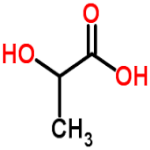
Please visit Hazard Statement of Lactic acid USP BP Ph Eur FCC Food Grade Suppliers.
Calcium Lactate CAS Number 814-80-2, Sodium Lactate CAS Number 72-17-3 & Lactic acid CAS Number 50-21-5 (DL), 79-33-4 (L), 10326-41-7 (D) Supplier Exporter, Manufacturer:
Annie Chemie P Ltd
Mumbai 4000010, INDIA
With Agents and offices in UAE, USA, Europe.
e-mail: info@anniechemie.com
Copyright and Usual Disclaimer is Applicable.
May 30, 2025
Exporters to USA, Canada, UK, Europe, UAE, Nigeria, Algeria, Turkey, Mexico, Brazil, Chile, Argentina, Australia, Dubai etc.
Perfection is made up of small things and that is a big thing.
